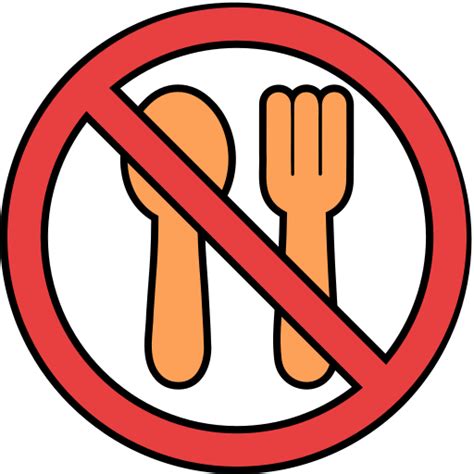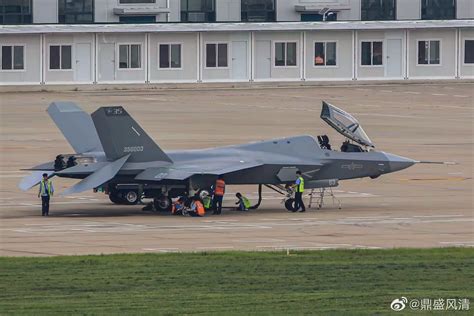
Contaminated tomatoes potentially carrying Salmonella have prompted a recall across California, Arizona, and Texas, leading the Food and Drug Administration (FDA) to issue a warning urging consumers to avoid eating certain tomatoes purchased from specific retailers. The FDA is actively investigating the outbreak and working to identify the source of the contamination.
The tomatoes in question were sold in pre-packaged containers and as loose, bulk tomatoes, primarily between May and August 2024. Symptoms of Salmonella infection include diarrhea, fever, and abdominal cramps, typically developing within 12 to 72 hours after consuming contaminated food. Severe cases may require hospitalization. The FDA advises anyone experiencing these symptoms after consuming tomatoes to seek medical attention immediately.
Details of the Recall and Investigation
The FDA’s alert specifically targets certain brands and suppliers suspected of being linked to the Salmonella outbreak. While the exact source of the contaminated tomatoes is still under investigation, preliminary findings suggest a potential link to farms in specific regions of Mexico and the United States. The FDA is collaborating with the Centers for Disease Control and Prevention (CDC) and state health departments to trace the origin of the outbreak and prevent further illnesses.
According to the FDA, the recall involves various types of tomatoes, including Roma, round, and grape tomatoes. These tomatoes were distributed to major grocery chains, restaurants, and food service providers in the affected states. The FDA is working closely with these establishments to ensure that the contaminated tomatoes are removed from shelves and that proper sanitation measures are implemented.
The FDA advises consumers who have recently purchased tomatoes to check the packaging for any identifying information, such as brand names, supplier details, and sell-by dates. If the tomatoes match the description of the recalled products, they should be discarded immediately or returned to the place of purchase for a full refund.
Health Risks Associated with Salmonella
Salmonella is a bacterium that can cause a common foodborne illness. Most people infected with Salmonella develop symptoms such as diarrhea, fever, and abdominal cramps. These symptoms typically appear within 12 to 72 hours after consuming contaminated food. The illness usually lasts for four to seven days, and most people recover without treatment.
However, in some cases, Salmonella infection can be severe and require hospitalization. Infants, young children, older adults, and people with weakened immune systems are more likely to develop severe illness. In rare cases, Salmonella infection can spread from the intestines to the bloodstream and other body sites, leading to serious complications such as sepsis or meningitis.
The FDA emphasizes that proper food handling and preparation practices can help prevent Salmonella infection. These practices include washing hands thoroughly with soap and water before and after handling food, cooking food to the proper temperature, and avoiding cross-contamination between raw and cooked foods.
Consumer Advice and Precautions
In light of the recent Salmonella outbreak, the FDA offers the following advice to consumers:
-
Check Your Tomatoes: Carefully inspect any tomatoes you have recently purchased to see if they match the description of the recalled products. Look for brand names, supplier details, and sell-by dates.
-
Discard or Return: If you have tomatoes that may be contaminated, discard them immediately or return them to the place of purchase for a full refund.
-
Wash Thoroughly: Wash your hands thoroughly with soap and water after handling tomatoes, especially if you are unsure of their origin.
-
Sanitize Surfaces: Clean and sanitize any surfaces that may have come into contact with the contaminated tomatoes, such as cutting boards, countertops, and utensils.
-
Monitor for Symptoms: If you develop symptoms of Salmonella infection, such as diarrhea, fever, and abdominal cramps, seek medical attention immediately.
FDA’s Ongoing Efforts
The FDA is committed to protecting public health and is working diligently to investigate the Salmonella outbreak and prevent further illnesses. The agency is collaborating with the CDC, state health departments, and industry partners to identify the source of the contamination and implement corrective actions.
The FDA is also conducting inspections of farms and processing facilities to ensure that they are following proper food safety practices. The agency is working to enhance its surveillance and monitoring efforts to detect and respond to foodborne illness outbreaks more quickly.
“Our top priority is to ensure the safety of the food supply and protect consumers from foodborne illnesses,” said an FDA spokesperson. “We are working closely with our partners to investigate this outbreak and take all necessary steps to prevent further illnesses.”
The FDA encourages consumers and healthcare providers to report any suspected cases of Salmonella infection to their local health department or the FDA. Reporting these cases helps the FDA track outbreaks and identify potential sources of contamination.
Impact on the Tomato Industry
The Salmonella outbreak has had a significant impact on the tomato industry, leading to widespread recalls and consumer concerns. Many tomato growers and distributors have experienced financial losses as a result of the outbreak.
The industry is working to implement stricter food safety practices to prevent future outbreaks. These practices include enhancing sanitation measures, improving traceability systems, and conducting regular testing for Salmonella and other pathogens.
The FDA is working with the industry to provide guidance and support in implementing these practices. The agency is also conducting research to better understand the factors that contribute to Salmonella contamination in tomatoes and develop more effective prevention strategies.
History of Salmonella Outbreaks in Tomatoes
This is not the first time that tomatoes have been linked to Salmonella outbreaks. In recent years, there have been several outbreaks associated with tomatoes, highlighting the need for improved food safety practices in the tomato industry.
In 2005, a large Salmonella outbreak was linked to raw tomatoes, resulting in over 1,000 illnesses across the United States. The outbreak was traced to tomatoes grown in Virginia and North Carolina.
In 2006, another Salmonella outbreak was linked to tomatoes, causing over 170 illnesses in 16 states. The outbreak was traced to tomatoes grown in Florida.
In 2008, a major Salmonella outbreak was linked to raw produce, including tomatoes. The outbreak resulted in over 1,400 illnesses and two deaths. The outbreak was traced to tomatoes and peppers grown in Mexico.
These outbreaks have prompted the FDA and the tomato industry to take steps to improve food safety practices. However, the recent outbreak demonstrates that more work needs to be done to prevent Salmonella contamination in tomatoes.
The Role of Traceability
Traceability plays a crucial role in identifying the source of foodborne illness outbreaks. Traceability systems allow investigators to track the movement of food products from the farm to the consumer, helping them to quickly identify the source of contamination and prevent further illnesses.
The FDA is working to enhance traceability systems for all food products, including tomatoes. The agency is developing new regulations that will require food producers to provide more detailed information about the origin and movement of their products.
The tomato industry is also working to improve its traceability systems. Many growers and distributors are implementing new technologies, such as blockchain, to track the movement of their products and improve transparency.
The Importance of Food Safety Practices
Food safety practices are essential for preventing foodborne illnesses. These practices include washing hands thoroughly, cooking food to the proper temperature, avoiding cross-contamination, and storing food properly.
The FDA provides guidance and resources to help consumers and food businesses implement food safety practices. The agency also conducts inspections of food facilities to ensure that they are following proper food safety standards.
Consumers can play a role in preventing foodborne illnesses by following proper food safety practices at home. These practices include washing hands before preparing food, cooking food to the proper temperature, and storing food properly.
Future Prevention Strategies
Preventing future Salmonella outbreaks in tomatoes will require a multi-faceted approach involving government, industry, and consumers. Some potential prevention strategies include:
-
Enhanced Sanitation Measures: Implementing stricter sanitation measures on farms and in processing facilities to reduce the risk of Salmonella contamination.
-
Improved Traceability Systems: Enhancing traceability systems to quickly identify the source of contamination and prevent further illnesses.
-
Regular Testing: Conducting regular testing for Salmonella and other pathogens in tomatoes and irrigation water.
-
Education and Training: Providing education and training to farm workers, food handlers, and consumers on proper food safety practices.
-
Research and Development: Conducting research to better understand the factors that contribute to Salmonella contamination in tomatoes and develop more effective prevention strategies.
The FDA is committed to working with its partners to implement these strategies and prevent future Salmonella outbreaks in tomatoes.
Economic Considerations
The economic impact of Salmonella outbreaks can be substantial. Recalls, lost sales, and damage to brand reputation can cost the food industry millions of dollars. In addition, outbreaks can lead to increased healthcare costs and lost productivity.
Preventing Salmonella outbreaks is not only important for protecting public health, but also for protecting the economy. Investing in food safety practices and traceability systems can help to reduce the risk of outbreaks and minimize their economic impact.
The FDA is working to promote food safety and prevent foodborne illnesses to protect both public health and the economy.
Impact on Consumers
The Salmonella outbreak has understandably caused concern among consumers, particularly those who regularly consume tomatoes. Consumers may be hesitant to purchase tomatoes and may be seeking alternative options.
The FDA advises consumers to follow the recommendations outlined above, including checking the packaging of tomatoes for identifying information and discarding or returning any potentially contaminated products.
Consumers can also take steps to protect themselves from foodborne illnesses by following proper food safety practices at home.
The Importance of Communication
Effective communication is essential during a foodborne illness outbreak. The FDA, CDC, and state health departments need to communicate clearly and quickly with the public to provide information about the outbreak, the affected products, and steps consumers can take to protect themselves.
The media also plays a crucial role in communicating information about outbreaks to the public. Accurate and timely reporting can help to prevent further illnesses and reduce consumer anxiety.
The FDA is committed to communicating effectively with the public during foodborne illness outbreaks. The agency provides regular updates on its website and through social media channels.
Global Implications
Foodborne illness outbreaks can have global implications, particularly when they involve imported products. The recent Salmonella outbreak in tomatoes highlights the need for strong food safety standards and traceability systems across the global food supply chain.
The FDA works with international partners to promote food safety and prevent foodborne illnesses. The agency is committed to ensuring that imported food products meet the same safety standards as domestic products.
The global food supply chain is complex and interconnected, and international cooperation is essential for protecting public health.
Conclusion
The recent Salmonella outbreak linked to tomatoes sold in California, Arizona, and Texas underscores the importance of food safety and the need for vigilance from producers, distributors, and consumers alike. The FDA’s ongoing investigation and collaboration with other agencies aim to identify the source of the contamination and prevent further illnesses. Consumers are urged to follow the FDA’s recommendations, check their tomatoes, and practice proper food handling techniques to minimize their risk. The incident serves as a reminder of the potential dangers of foodborne illnesses and the critical role that food safety measures play in protecting public health. The situation continues to evolve, and updates will be provided by the FDA as the investigation progresses.
Frequently Asked Questions (FAQ)
Q1: What specific types of tomatoes are affected by the Salmonella recall?
A1: The recall involves various types of tomatoes, including Roma, round, and grape tomatoes. These tomatoes were sold in pre-packaged containers and as loose, bulk tomatoes. It’s crucial to check the packaging for brand names, supplier details, and sell-by dates to determine if your tomatoes are part of the recall. Specific brands haven’t been officially pinpointed by the FDA in initial reports, making thorough inspection a consumer’s best defense. As the investigation continues, more specific brand information is expected to be released.
Q2: What are the symptoms of a Salmonella infection, and what should I do if I experience them?
A2: Symptoms of Salmonella infection typically include diarrhea, fever, and abdominal cramps. These symptoms usually develop within 12 to 72 hours after consuming contaminated food. The illness typically lasts for four to seven days, and most people recover without treatment. However, if you experience these symptoms after consuming tomatoes or suspect you have a Salmonella infection, it is important to seek medical attention immediately. Severe cases may require hospitalization, especially for infants, young children, older adults, and people with weakened immune systems. Dehydration is a significant concern, so maintaining hydration is crucial while seeking medical advice.
Q3: How can I identify if the tomatoes I purchased are part of the recalled batch?
A3: The FDA advises consumers to check the packaging of any recently purchased tomatoes for identifying information, such as brand names, supplier details, and sell-by dates. Match this information with any recall notices issued by the FDA or retailers. Because specific brands and suppliers are still under investigation, it’s important to look for any unusual characteristics or labels. If you are unsure whether your tomatoes are part of the recall, it is best to discard them as a precaution. Returning them to the place of purchase for a refund is also an option. Keep an eye on the FDA’s website and news outlets for updated lists of affected brands and retailers as the investigation progresses.
Q4: What steps are being taken to identify the source of the Salmonella contamination?
A4: The FDA is working closely with the CDC, state health departments, and industry partners to trace the origin of the outbreak. This involves conducting inspections of farms and processing facilities, collecting samples for testing, and reviewing records to identify potential sources of contamination. Preliminary findings suggest a potential link to farms in specific regions of Mexico and the United States, but the investigation is ongoing. The FDA is also enhancing its surveillance and monitoring efforts to detect and respond to foodborne illness outbreaks more quickly. Traceability systems are being utilized to track the movement of tomatoes from the farm to the consumer, helping investigators pinpoint the source of contamination.
Q5: Beyond tomatoes, what general precautions can I take to prevent Salmonella infection from other foods?
A5: To prevent Salmonella infection from any food, it is crucial to follow proper food handling and preparation practices. These include:
- Washing Hands Thoroughly: Wash your hands with soap and water for at least 20 seconds before and after handling food, especially raw meat, poultry, seafood, and eggs.
- Cooking Food to Proper Temperatures: Use a food thermometer to ensure that food is cooked to the proper internal temperature to kill harmful bacteria.
- Avoiding Cross-Contamination: Use separate cutting boards and utensils for raw and cooked foods to prevent cross-contamination. Clean and sanitize surfaces that have come into contact with raw foods.
- Storing Food Properly: Refrigerate perishable foods promptly and keep them at a safe temperature (below 40°F).
- Washing Fruits and Vegetables: Wash fruits and vegetables thoroughly under running water before eating, cutting, or cooking.
- Avoiding Raw or Undercooked Foods: Avoid consuming raw or undercooked meat, poultry, seafood, and eggs, as these foods may contain harmful bacteria.
- Being Cautious with Unpasteurized Products: Be cautious when consuming unpasteurized milk and dairy products, as they may contain harmful bacteria.
- Keeping a Clean Kitchen: Regularly clean and sanitize your kitchen, including countertops, sinks, and appliances.
Following these precautions can significantly reduce your risk of Salmonella infection and other foodborne illnesses.
Expanded Content:
Historical Context of Food Safety Regulations in the United States:
The need for robust food safety regulations in the United States became evident in the early 20th century, driven by several high-profile incidents of food contamination and unsanitary food production practices. Upton Sinclair’s 1906 novel, “The Jungle,” exposed the appalling conditions in the meatpacking industry, galvanizing public opinion and prompting legislative action. This led to the passage of the Pure Food and Drug Act of 1906, which prohibited the sale of adulterated or misbranded food and drugs and established the Food and Drug Administration (FDA).
Over the years, food safety regulations have evolved to address emerging threats and technological advancements in food production. The Federal Food, Drug, and Cosmetic Act of 1938 strengthened the FDA’s authority and expanded its oversight to include cosmetics and medical devices. Subsequent amendments and legislation have focused on specific areas such as pesticide regulation, food additives, and dietary supplements.
The Food Safety Modernization Act (FSMA), signed into law in 2011, represents a significant shift in the approach to food safety. FSMA emphasizes prevention rather than reaction, requiring food facilities to implement comprehensive food safety plans and conduct regular risk assessments. The law also enhances the FDA’s authority to inspect food facilities, issue recalls, and collaborate with foreign governments to ensure the safety of imported foods.
The Role of the CDC in Foodborne Illness Outbreak Investigations:
The Centers for Disease Control and Prevention (CDC) plays a critical role in investigating foodborne illness outbreaks and identifying the sources of contamination. The CDC collaborates with state and local health departments to track and monitor foodborne illnesses, analyze data to identify patterns and trends, and conduct epidemiological investigations to determine the cause of outbreaks.
When a foodborne illness outbreak is suspected, the CDC works with public health officials to interview infected individuals, collect food samples for testing, and trace the food products back to their source. The CDC also conducts laboratory analyses to identify the specific pathogens responsible for the outbreak and determine their genetic fingerprints.
The CDC’s findings are used to develop recommendations for preventing future outbreaks and to inform public health policies and regulations. The CDC also publishes reports and articles on foodborne illnesses to educate the public and healthcare professionals.
The Tomato Industry and Food Safety Challenges:
The tomato industry faces several unique food safety challenges due to the nature of tomato production and distribution. Tomatoes are often grown in open fields, where they are exposed to environmental contaminants such as animal waste, irrigation water, and soil-borne pathogens. Tomatoes are also susceptible to contamination during harvesting, packing, and transportation.
In recent years, there have been several high-profile Salmonella outbreaks linked to tomatoes, highlighting the need for improved food safety practices in the tomato industry. These outbreaks have prompted growers, packers, and distributors to implement stricter sanitation measures, improve traceability systems, and conduct regular testing for Salmonella and other pathogens.
The FDA has also worked with the tomato industry to develop guidance and best practices for food safety. These guidelines address issues such as water quality, fertilizer management, pest control, and post-harvest handling.
The Impact of Climate Change on Food Safety:
Climate change is expected to exacerbate existing food safety challenges and create new risks for the food supply. Rising temperatures, changing precipitation patterns, and extreme weather events can all affect the growth, production, and distribution of food, increasing the potential for contamination and spoilage.
For example, warmer temperatures can promote the growth of bacteria and pathogens in food, increasing the risk of foodborne illnesses. Changes in precipitation patterns can affect the availability and quality of irrigation water, which can impact the safety of produce. Extreme weather events such as floods and droughts can damage crops, disrupt supply chains, and increase the risk of contamination.
Addressing the impacts of climate change on food safety will require a comprehensive approach involving government, industry, and consumers. This includes implementing sustainable agricultural practices, improving food safety regulations, and investing in research and development to develop climate-resilient food systems.
The Role of Technology in Enhancing Food Safety:
Technology plays an increasingly important role in enhancing food safety and preventing foodborne illnesses. Advancements in areas such as sensor technology, data analytics, and blockchain are enabling food producers and regulators to track and monitor food products more effectively, detect contamination more quickly, and respond to outbreaks more efficiently.
For example, sensor technology can be used to monitor temperature, humidity, and other environmental conditions in food processing facilities and transportation vehicles, helping to ensure that food is stored and transported safely. Data analytics can be used to analyze large datasets to identify patterns and trends that may indicate potential food safety risks. Blockchain technology can be used to create a secure and transparent record of the movement of food products from the farm to the consumer, improving traceability and accountability.
The adoption of these technologies can help to transform the food safety system from a reactive to a proactive approach, preventing foodborne illnesses before they occur.
The Importance of Consumer Education:
Consumer education is essential for preventing foodborne illnesses and protecting public health. Consumers need to be aware of the risks associated with foodborne pathogens and the steps they can take to minimize their risk.
Educational campaigns can focus on topics such as proper handwashing techniques, cooking food to the proper temperature, avoiding cross-contamination, and storing food properly. These campaigns can be targeted to specific audiences, such as pregnant women, older adults, and people with weakened immune systems, who are at higher risk of developing severe foodborne illnesses.
Consumer education can also play a role in promoting safer food choices. Consumers can be encouraged to purchase food from reputable sources, read food labels carefully, and avoid consuming raw or undercooked foods.
By empowering consumers with knowledge and information, we can create a culture of food safety that protects public health and prevents foodborne illnesses.
The Future of Food Safety:
The future of food safety will be shaped by several factors, including technological advancements, climate change, globalization, and changing consumer preferences. To address these challenges, we need to develop a food safety system that is proactive, resilient, and adaptable.
This includes investing in research and development to develop new technologies and strategies for preventing foodborne illnesses, strengthening food safety regulations and enforcement, promoting sustainable agricultural practices, and empowering consumers with knowledge and information.
By working together, government, industry, and consumers can create a food safety system that protects public health and ensures a safe and sustainable food supply for all.









